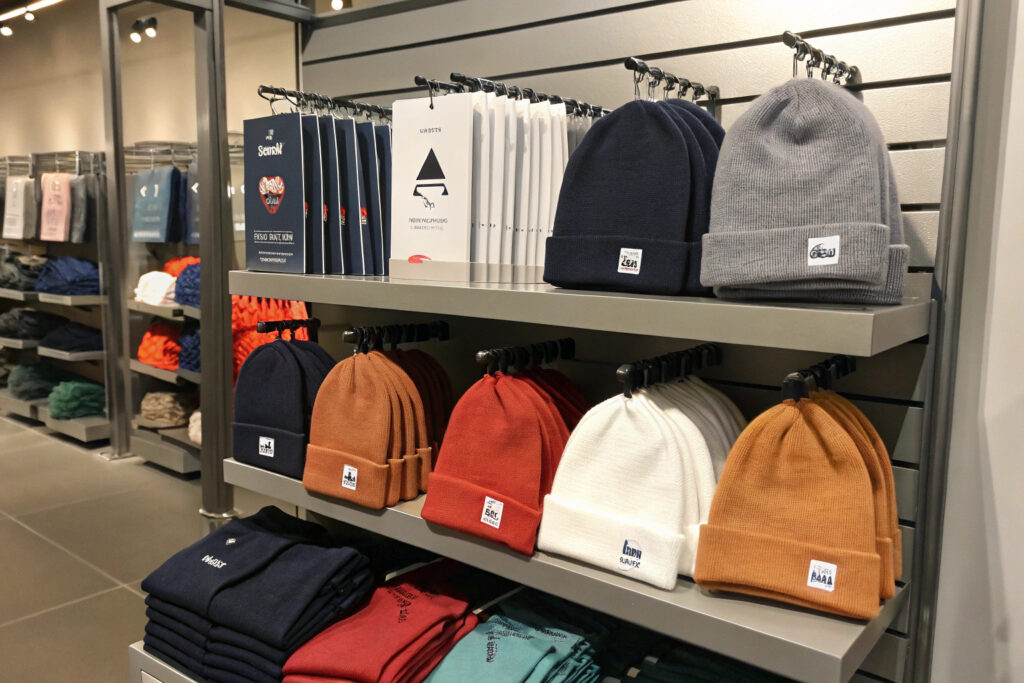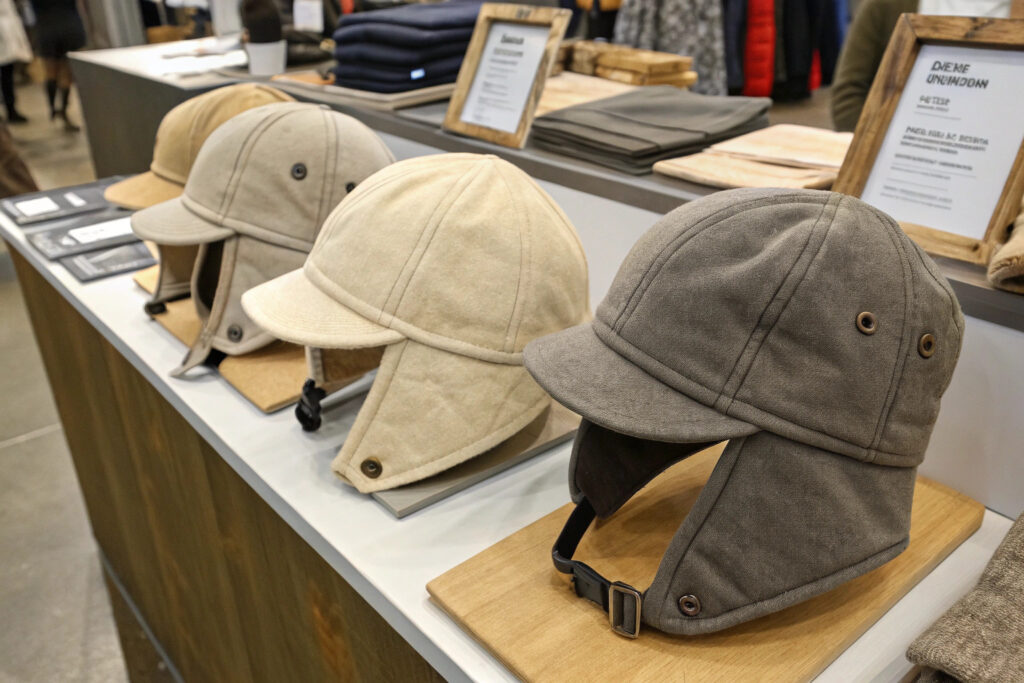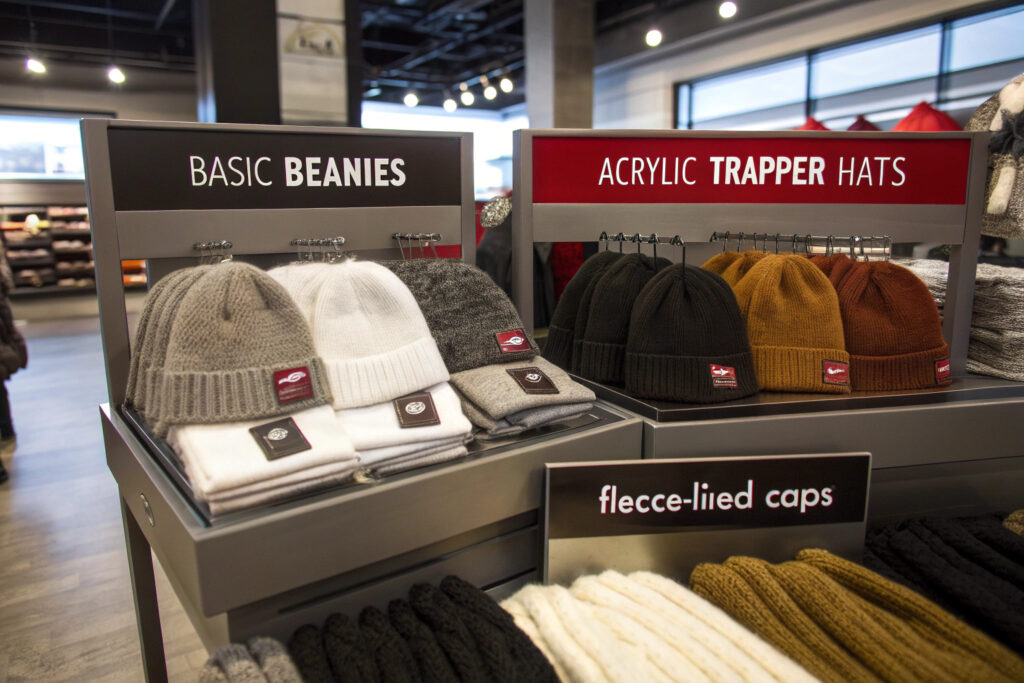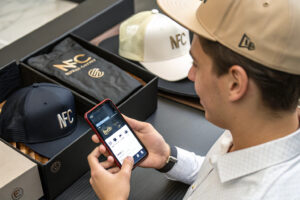For retailers, finding winter hats that balance cost, quality, and customer appeal is crucial for maximizing profit margins while meeting consumer expectations. The most cost-effective options deliver perceived value that exceeds their wholesale cost while maintaining durability and style that drives repeat purchases.
The most cost-effective winter hats for retail include basic beanies, acrylic trapper hats, fleece-lined caps, simple earflap hats, and bulk-packaged stretch knit caps. These options provide the best balance of low manufacturing cost, strong customer appeal, and reliable performance in winter conditions.
Understanding these cost-effective categories helps retailers build winter hat assortments that drive sales volume while maintaining healthy profit margins across different price points and customer segments.
Why Do Basic Beanies Dominate Value Categories?
Basic beanies represent the foundation of cost-effective winter hat retailing, offering the lowest production costs while maintaining strong consumer demand across all demographics.
Basic beanies achieve cost-effectiveness through simple construction, inexpensive materials, and efficient manufacturing processes that minimize production expenses while delivering reliable winter warmth.

What Construction Methods Minimize Beanie Costs?
Simplified manufacturing processes and efficient material usage create beanies that retail profitably at accessible price points.
Single-needle knitting machines produce seamless beanies with minimal labor requirements, typically costing $1.50-$2.50 to manufacture. Acrylic yarn blends provide warmth and durability at material costs 40-60% lower than natural fibers. Minimal finishing requirements eliminate costly processes like brushing or special washing. Our basic beanie production achieves manufacturing costs of $1.75-$2.25 per unit, allowing retail pricing at $8-$12 while maintaining 60-70% gross margins.
How Does Bulk Packaging Enhance Profitability?
Strategic packaging approaches reduce per-unit costs while maintaining product presentation quality.
Polybag packaging costs $0.08-$0.12 per unit compared to $0.25-$0.40 for boxes, saving $0.17-$0.28 per hat. Multi-pack configurations of 3-5 beanies increase average transaction value while reducing individual packaging costs. Minimal branding on basic styles eliminates decoration expenses of $0.15-$0.25 per unit. Our bulk packaging strategies reduce total delivered cost by 18-22% while maintaining the perceived value needed for successful retail sales.
What Makes Acrylic Blends the Cost-Efficiency Champion?
Acrylic and acrylic-blend winter hats deliver exceptional value by providing wool-like warmth at significantly lower material costs with easier care requirements.
Acrylic blends dominate cost-effective winter categories through their low raw material costs, color versatility, easy maintenance, and consistent quality across production runs.

How Do Acrylic Costs Compare to Natural Fibers?
The significant price differential between acrylic and natural fibers creates compelling cost advantages for value-oriented winter hats.
Acrylic yarn costs $2.50-$3.50 per pound compared to wool at $8-$12 per pound and cashmere blends at $25-$45 per pound. Solution-dyed acrylic eliminates separate dyeing costs of $0.35-$0.50 per hat. Superior color retention reduces returns from fading compared to some natural fibers. Our acrylic programs achieve 35-45% lower material costs than wool equivalents while delivering comparable warmth for most winter conditions.
What Performance Advantages Support Value Positioning?
Beyond cost savings, acrylic delivers functional benefits that enhance perceived value at retail price points.
Excellent color vibrancy creates visual appeal that justifies pricing above basic beanies. Hypoallergenic properties appeal to customers with wool sensitivities. Machine washability simplifies care compared to hand-wash-only natural fibers. Our acrylic trapper hats retail profitably at $15-$22 while providing the aesthetic and functional qualities customers expect from $25-$35 wool blends.
How Do Fleece-Lined Caps Balance Cost and Comfort?
Fleece-lined caps combine the familiar style of baseball caps with winter warmth, creating versatile products that appeal to multiple customer segments at accessible price points.
Fleece-lined caps achieve cost-effectiveness through efficient manufacturing of standard cap structures with simple lining additions that dramatically increase warmth without proportional cost increases.

What Lining Methods Optimize Cost Efficiency?
Strategic lining approaches maximize warmth while controlling production expenses.
Glue-point attachment secures fleece lining at key points without full seam integration, reducing labor by 40-50%. Pre-quilted lining panels simplify installation while enhancing insulation properties. Targeted lining placement in crown and ear areas provides warmth where needed most. Our fleece lining methods add $1.25-$1.75 to manufacturing costs while enabling retail pricing $8-$12 higher than unlined equivalents.
How Does Versatility Drive Sales Velocity?
The dual-season functionality of fleece-lined caps increases sell-through rates and reduces inventory risk.
Removable lining options create year-round products that appeal to practical consumers. Style continuity with popular cap silhouettes ensures broad customer acceptance. Gradual seasonal transition extends selling season compared to heavy winter-only items. Our fleece-lined caps typically achieve 25-35% higher sell-through rates than single-season winter items, improving inventory turnover and reducing markdown requirements.
What Simple Earflap Hats Offer Rural and Youth Appeal?
Basic earflap hats provide traditional winter functionality at manufacturing costs that support aggressive retail pricing while appealing to practical consumers and youth markets.
imple earflap designs offer great value by using straightforward patterns, making the most of materials, and featuring a style that appeals to budget-minded shoppers looking for practical warmth.

What Construction Simplifications Reduce Costs?
Streamlined manufacturing processes and material choices maintain earflap functionality while minimizing expenses.
Minimal pattern pieces reduce cutting time and material waste compared to complex designs. Basic closure systems like simple ties or elastic cords eliminate costly buckles or snaps. Unlined construction utilizes fabric weight for warmth rather than added insulation layers. Our simple earflap designs manufacture for $3.50-$4.75, supporting retail prices of $16-$22 with strong margins.
How Does Youth Market Focus Enhance Value Perception?
Targeting younger demographics with functional designs creates strong value perception at accessible price points.
Durable materials withstand rough use while maintaining appearance through multiple seasons. Playful elements like animal designs or bright colors justify pricing above basic styles. Growth accommodation through adjustable features extends product lifespan for growing children. Our youth-focused earflap hats achieve 40-50% higher sales volume than adult equivalents during holiday and back-to-school seasons.
How Do Bulk Stretch Knit Caps Maximize Volume Sales?
Bulk-packaged stretch knit caps represent the ultimate volume-oriented winter hat, achieving the lowest per-unit costs while delivering acceptable quality for promotional and impulse purchase situations.
Stretch knit caps excel in cost-effectiveness through high-volume production, minimal material requirements, and packaging strategies that reduce handling and display costs.

What Production Efficiencies Enable Ultra-Low Pricing?
Manufacturing optimizations and volume economics create caps that compete effectively at the lowest retail price points.
High-speed knitting machines produce 150-200 caps per hour compared to 40-60 for more complex constructions. Minimal material weight of 1.5-2.0 ounces per cap reduces raw material costs to $0.75-$1.25. Bulk dyeing processes color dozens of caps simultaneously for $0.08-$0.12 per unit. Our volume production achieves manufacturing costs of $1.25-$1.75 per cap, enabling profitable retail at $5-$7 with 60-65% gross margins.
What Retail Strategies Maximize Bulk Hat Profitability?
Strategic merchandising and pricing approaches drive volume that compensates for lower per-unit margins.
Impulse display placement near checkout areas captures spontaneous purchases. Color assortment strategies offering multiple options in single displays increase total units sold per customer interaction. Seasonal promotion timing during holiday and cold-weather peaks maximizes sales velocity. Our bulk hat programs typically generate 3-5x the unit volume of premium winter hats, with total dollar profitability exceeding higher-priced alternatives through sheer sales quantity.
Conclusion
The most cost-effective winter hats for retail strike a balance between manufacturing efficiency, material economy, and customer appeal, ensuring strong profit margins while meeting price point expectations. Basic beanies, acrylic blends, fleece-lined caps, simple earflap designs, and bulk stretch knits cater to different value segments while keeping retail economics healthy.
By understanding these cost-effective categories and implementing strategic sourcing, packaging, and merchandising approaches, retailers can build winter hat assortments that drive volume sales, maintain strong margins, and meet diverse customer needs across price points and demographics.
Ready to source cost-effective winter hats for your retail business? Contact our Business Director Elaine today to discuss manufacturing options, volume pricing, and assortment strategies. Her email is elaine@fumaoclothing.com. Let's build a winter hat program that maximizes your profitability while delivering value your customers will appreciate.







